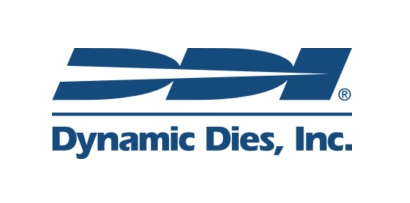Eye on the future: How the ACUITY Ultra Hybrid LED is helping extend Dynamic Dies’ legacy of innovation
Dynamic Dies Inc.’s first die cut came the day Tom Sullivan opened the doors to his company in 1971. He was operating from an old abandoned auto repair shop, creating the template for making rotary cutting dies and placing himself on the cutting edge of the corrugated market.
Eventually, Tom, grew the business. In 1984-85, Dynamic Dies added printing plates and moved into the digital side in 2016.
Today, the company, run by Tom’s son, Pat, is a full-service cutting die, pre-press, flexographic plate manufacturing and digital printing company with an in-house graphics design team and support to create custom packaging. The second-generation family business continues to build on its rich tradition by continually evolving with the industry’s changes to deliver innovative, tailored printing and cutting die solutions with the wrap-around support.
The Challenge
As its business expanded and customer demand for its services grew, Dynamic Dies faced significant challenges to keep pace. Initially, the Holland, Ohio company with locations in Middleton, Ohio, two in Indianapolis and one in Pittsburgh adopted the digital printing route to handle small volume orders that traditional corrugated box houses couldn’t efficiently manage.
But as its digital division’s success soared, the Dynamic Dies team encountered severe capacity issues with their existing equipment. While its FUJIFILM ACUITY F wide format printer was a long-time reliable and steady component, they needed an upgrade. “Capacity, capacity, capacity,” says Jeff Francis, Graphics Division Manager. “We had just gotten to a point where labor putting the boards on the machine had taken over the output. We needed more capacity. We had maxed out three shifts and still couldn’t get more out. Our lead time started going from two weeks to three weeks to five weeks when we were busy.”
The bottleneck caused the Dynamic Dies team to lose business to competitors due to delayed deliveries and insufficient production volume.
The Solution
After using only one printer, Francis knew that to keep everything streamlined in all of its facilities, Dynamic Dies would have to address its capacity constraints. The decision was to upgrade its wide format equipment portfolio—and the FUJIFILM ACUITY Ultra Hybrid LED was its choice.
The Acuity offered three times the capacity of its previous setup and introduced significant workflow efficiencies, allowing for continuous feeding of multiple boards with a vacuum system to hold them in place. “The Acuity Ultra Hybrid allowed us to stop taping down larger sheets and handling less,” Francis says. “We looked at it and said, ‘Okay, we have a couple of different ways to think about this now. Instead of large sheets of board, can we handle smaller sheets of board and move them more efficiently?’”
The move helped reduce labor costs and speed up the printing process. The decision to stick with Fujifilm was influenced by their positive experiences with the company’s products and support, as well as the reliable quality of consumables and maintenance services. “Our relationship with Fujifilm had gone back many years, starting in 2016 (when Dynamic Dies went digital),” Francis says. “We knew what we were getting. We knew the quality of the product and the quality of the consumables were very good.”
The Results
The implementation of the ACUITY Ultra Hybrid significantly improved Dynamic Dies’ production capabilities and overall business operations. Now, it was able to eliminate the three-week backlog within weeks, and its production volume increased by two to three times. The upgrade allowed the Dynamic Dies team to maintain shorter lead times, ensuring timely deliveries and retaining customer satisfaction. It also can handle both rigid and roll-to-roll materials and expanded its service offerings.
The flexibility of the Ultra Hybrid also opened new market opportunities, enabling them to handle smaller and varied job requests, such as banners and sponsor signs for local golf courses, which they previously had to decline. “Our main focus has been food products, beer products, wine products and other spirits due to our location,” Francis says. “We’ve also handled parts for equipment and pharmaceuticals with some local area brands, which are not large sizes but smaller boxes.”
Moreover, Francis says the advanced ink formulation of the Ultra Hybrid provided vibrant colors and high- quality prints with fewer passes, further optimizing ink usage and operational efficiency. “This new formulation of ink has given us the vibrant colors and speed we need with fewer passes and probably less ink, though we haven’t measured that yet.”

